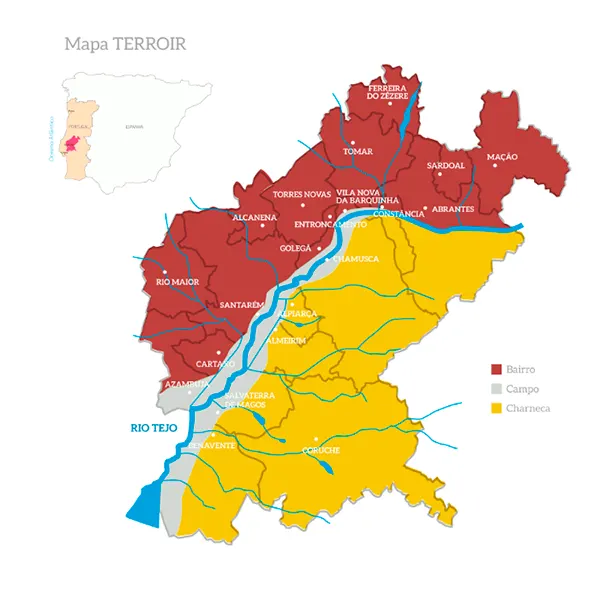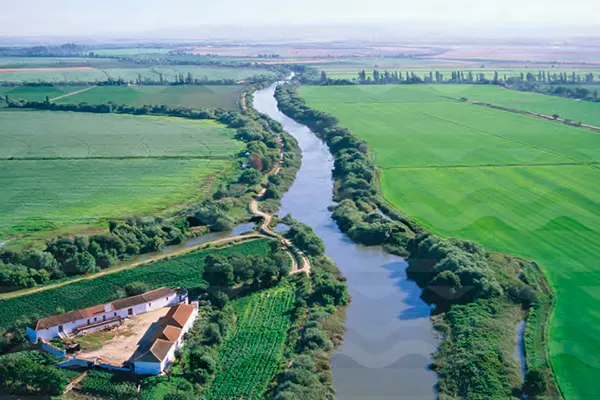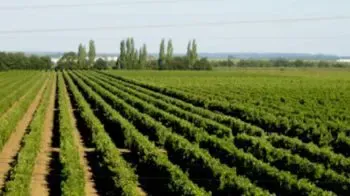Located in the heart of Portugal, the Tejo Region is one of the oldest regions in the country to produce wine.
The region's borders are delimited by Tomar, Ferreira do Zêzere, Sardoal and Mação, to the North; Abrantes, Chamusca, Alpiarça and Almeirim, to the east; Torres Novas, Alcanena, Rio Maior, Cartaxo and Azambuja, to the west; Coruche and Benavente, to the south.
The region comprises a total of 17 thousand hectares, which annually produce around 650,000 hectoliters of wine, which represents around 10% of the national total. Of these 650 thousand, around 110 thousand hectoliters are certified, of which 90% are wines with Protected Geographical Indication (IGP) and 10% are wines with Controlled Denomination of Origin (DOC).

Image: CVRTejo - Vinhos do Tejo
Types of wines and grape varieties from the Tejo Wine Region
The most planted red varieties in the Tejo region are Touriga Nacional, Trincadeira, Castelão, Syrah, Cabernet Sauvignon and Aragonês. As for white varieties, the most widely planted is Fernão Pires, however, Arinto, Alvarinho, Chardonnay and Sauvignon Blanc are also very important for the region.
In the Tejo region, red wines are historically associated with various national varieties and more recently with the combination of these with international varieties. The white wines are very diverse wines, with a palette of aromas ranging from the rich and floral Fernão Pires to the fresh and aromatic Arinto.
Terroir of the Tejo Wine Region
In the Tejo Region the climate is mediterranean, however it is influenced by the Tagus River, which makes the seasons of the year milder.
In recent years, when the priorities of producers have shifted from quantity of wine to quality of wine, new vine plantations in the Tejo region have been concentrated in the highest and driest areas: the Charneca and Bairro. Charneca is a production area (terroir) in the Tejo Region which is located southeast of the river and is warmer and drier than the rest of the Tejo region. To the north and east of the river, the plateaus are known as "O Bairro", another type of terroir, where plains and hills alternate that extend to the foothills of the Serra de Aire and Serra dos Candeeiros mountains.
The soils vary depending on the proximity of the river, there are four types: calcareous clay soils, arranged in more irregular fields, where mountains alternate with plains, reaching the northern border of the region. Here the vineyard and olive groves dominate. The schist soils, mainly in the north, in a small area near Tomar. Alluvial soils on the banks of the river. And the sandy soils, on the southern banks of the river.

Image: Intermarché
Pairing Tejo wines with food
Red wines from the Tejo region are young and aromatic, so the ideal is to accompany them with white meat, chicken pizzas or pasta with mild sauces.
The white wines of this region, due to the fact that they are light, can be consumed on several occasions. They can be drunk as an aperitif, with salads, oven-baked fish dishes or seafood.
 Portugal
Portugal Spain
Spain France
France Germany
Germany United Kingdom
United Kingdom Monaco
Monaco



